Analysis of Some Nutrient Parameters in Legumes Grown in the City of Mbuji-Mayi and Its Surroundings (Case of Cows) ()

1. Introduction
The nutritional situation is critical in Kasaï Oriental, one of the provinces of Democratic Republic of the Congo (DRC), where malnutrition remains one of the most frequent causes of morbidity and mortality encountered in children [1]. Indeed, in Mbuji-Mayi, the capital of the Province and by way of illustration, the malnutrition rate in the Bipemba Health Zone is 17.9% for global acute malnutrition and 6.9% for severe acute malnutrition [2] [3] [4].
Due to the low income and the state of poverty in which most of the inhabitants of the city of Mbuji-Mayi find themselves, the majority of the population is unable to obtain a balanced diet, foodstuffs such as fish, meat, eggs, certain cereals and legumes not being within reach of their purse.
But the diversity of legumes grown not only in the gardens of the inhabitants of Mbujimayi but also in the fields around the town has been observed. They are sold in the various markets of this city. Among them, we think it would be possible to find a variety that could have the double quality of being, at the same time, the most nutritious and the least expensive of all.
To respond to this concern, we propose to conduct a study based on the quantitative determination of certain nutritional values contained in legumes grown in Mbuji-Mayi or imported from surrounding villages.
For this research, we have chosen a legume, Vigna unguiculata (L) Walp, also called cowpea, and some of its varieties, for the simple reason that its price is within the reach of almost the entire population of Mbujimayi.
It should be noted that this kind of study has already been treated in a certain way in certain works, such as those of Mpoyi, K. (2015) [5]. Comparative study of the protein, lipid and carbohydrate content in three varieties of Zea called maize grown in Kasai Oriental, the results of which showed that it is the yellow maize variety that stands out with 8.2 grams of protein, 3.9 grams of lipids and 65.9 grams of carbohydrate while the second set out to assess some parameters of the nutritional potential contained in Phaseolus vilgaris called beans sold in Mbujimayi, whose results showed that it is the green bean imported from North Kivu in the Democratic Republic of Congo which is full of better nutritional values with 17.2 grams of protein, 0.5 grams of lipid and 53. 2 grams of carbohydrate. All of the foodstuffs mentioned above (corn and beans) have prices that fluctuate from day to day and are beyond the reach of the majority of the population of the city of Mbujimayi.
2. Medium, Materials and Methods
2.1. Environment
The center of our study is the city of Mbujimayi and its surroundings, formerly called Bakwanga, is currently the capital of the province of Kasai Oriental, one of the 26 provinces of the Democratic Republic of Congo. It is determined by the following coordinates: 23˚27' and 23˚40' longitude east, 6˚5' and 6˚10' latitude south; the city is about 850 km east of Kinshasa and 200 km east of the city of Kananga [6].
Geomorphologically, it is built on a hilly plateau of altitude varying between 640 m from the Mbujimayi River to 780 m at Bipemba Airport. Its climate is tropical humid of the Sudanian type. Its average annual temperature is around 23˚C while its annual rainfall is 1420 m [7] (Figure 1).
![]()
Figure 1. Plan of the city of Mbujimayi.
2.2. Material
2.2.1. Plant Support
Our plant support consisted of the leaves and seeds of Vigna unguiculata (L) Walp. These samples were collected from the various cowpea production sites and sales markets in the town of Mbujimayi and its surroundings. The samples thus collected were dried in the absence of air before being transported to the laboratory of the agro-food research center in acronym CRAA, in Lubumbashi, where they were subjected to chemical analyses. Images of leaves and seeds of different varieties of Vigna unguiculata are listed in the Appendix.
2.2.2. Laboratory Materials, Apparatus and Reagents
1) Materials and devices
2) Reagents
2.2.3. Methods
Colorimetry was used for the determination of proteins and phosphorus while spectrophotometry was used for the analysis of total lipids and carbohydrates. Potassium and sodium were determined by flame photometry. Humidity and ashes were analyzed by the thermogravimetric method.
The energies in the cowpea seeds and leaves were calculated by applying the simple rule of 3 from the sum of their values of proteins, lipids and carbohydrates converted into energy, taking into account the principle according to which:
● 1 g of protein provides 0.004 cal (about 17J).
● 1 g of carbohydrate provides 0.004 cal (about 17J).
● 1 g of lipid provides 0.009 cal (about 38 J).
● By the calculations below, we show how the different values of the energy of Vigna Unguiculata (L) Walp were found. For illustration, we will only calculate for cowpea.
SEED
● 1 g of protein provides 0.004 cal of protein, 20.3 g of protein will provide
● 1 g of carbohydrate provides 0.004 cal of carbohydrate, 60.1 of carb will provide
● 1 g of lipid provides 0.009 cal of lipid, 0.6 g of lipid provides
Total energy = 0.0812 cal +0.2402 cal + 0.0054 cal = 0.3268 cal − 0.327 cal
SHEET
● 1 g of protein provides 0.004 cal of protein, 24.6 g of protein will provide
● 1 g of carbohydrate provides 0.004 cal of carbohydrate, of carb will provide
● 1 g of lipid provides 0.009 cal of lipid, 2.0 g of lipid will provide
Total energy =0.0984 cal + 0.2048 cal + 0.018 cal = 0.3212 cal
Energy values of other cowpea varieties were calculated in a manner similar to that of Cowpea sample 1 (seed and leaf).
3. Results and Discussion
The characteristics of the seeds and leaves of 5 varieties of Vigna unguiculata Walp (cowpea1, cowpea2, cowpea3, cowpea4 and cowpea5) “subjected to our analyzes are recorded in Table 1.
In relation to Table 1, the seeds and leaves of each variety of Vigna unguiculata Walp has a characteristic color allowing it to be differentiated from others.
The results of different analyses, moisture, proteins, total lipids, total carbohydrates, ashes, phosphorus, calcium, energy, sodium and potassium, carried out on all varieties of Vigna unguiculata walp are shown in Table 2.
By exploiting the results of Table 2, we find that in relation to humidity, it is the cowpea sample 1 that has a low value for both seeds and leaves, while the highest value is recorded, on sample 3 in the leaves and sample 5 in the seeds. But generally speaking, there is more moisture in the leaves of different types of cowpea than in the seeds. These results confirm those found in the literature [8]. We believe that the difference in moisture mass observed in the different cowpea samples is due either to the quality of the soil where these varieties were grown, or to the samples in the field or at the analytical laboratory.
![]()
Table 1. Varieties of Vigna unguiculata Walp and their characteristics.
![]()
Table 2. Results of the analyses carried out on the different varieties of Vigna unguiculata walp.
The results in Table 2 reveal that there is more protein in the cowpea leaves than in the seeds. But it is in the cowpea sample 2 where we recorded the high protein values in the leaves and in the seeds at the same time.
As with proteins, total lipids are much more concentrated in the leaves than in the seeds. For this parameter, it is sample 5 which proves to be the richest compared to the others in the two organs.
Contrary to the previous cases, the values of total carbohydrates are higher in the seeds than in the leaves. It is sample 2 that once again stands out with the highest value recorded both in the leaves and in the seeds.
As for the ash, the highest values are obtained with sample 3 in the leaves and in the seeds, but in general the leaves give much more ash than the seeds.
Generally speaking, all the cowpea samples submitted for our analyzes contain mineral salts in a much greater proportion in the seeds than in the leaves as far as phosphorus, iron and calcium are concerned. The greatest values of these parameters are recorded in samples 5, 2 and 5 for the seeds as well as 2, 4 and 1 with 2 ex-æquo in the leaves respectively.
During our analyses, sodium and potassium were not detected in any of the organs of our considered cowpea samples. We think that this situation can be caused by the state of the soil which would be very poor in these elements and that the latter would be so much in the state of traces that the method used to measure them could not detect them.
In view of the results recorded in Table 2, all the varieties of cowpea subjected to the analyses have significant energy potential, but it should be noted that on the whole the seeds are more calorific than the leaves, except in the case of cowpea cowpea sample 2.
The results in Table 2, taken as a whole, show us that all the varieties of cowpea submitted to our analyses constitute a good food and plead for their recommendation in the food of our population with regard to the standards required in this area [2]. However, compared to each other, it is the cowpea 2 variety which is the richest since it excels with its many high values compared to the others even if, on the other hand, its humidity is a concern.
4. Conclusions
Our study focused on the evaluation of the nutritional potential of legumes, both grown and consumed in and around the villages surrounding the town of Mbujimayi. Among these legumes, we have chosen cowpea, a versatile plant in the sense that we have the possibility of consuming its seeds and fresh or dried leaves as well as its green pods.
The leaves and seeds of 5 varieties of Vigna unguiculata Walp whose characteristics are given in Table 1 were chosen and the following parameters were analyzed at the CRAA Laboratory in Lubumbashi: moisture, proteins, lipids, carbohydrates, ash, phosphorus, iron, calcium, sodium, potassium and energy.
We have found that the results obtained are within the established standards for nutrition. This is why we are asking nutritionists to lead a campaign in favor of the consumption of cowpea by the population of Mbujimayi and its surroundings since it is a rich, local and inexpensive food.
Appendix
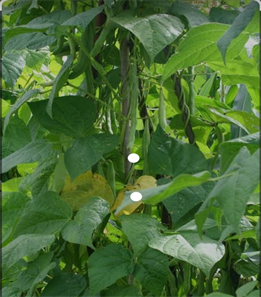
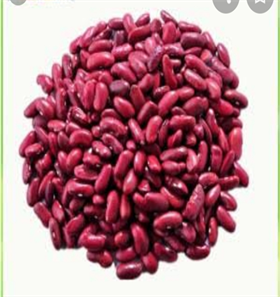
COWS3 (LIGHT RED) COWBEA LEAF3

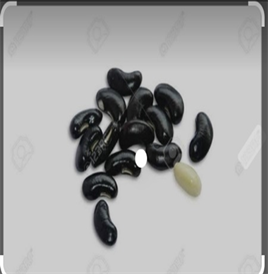
COWS2 (BLACK) COWBEA SHEET2
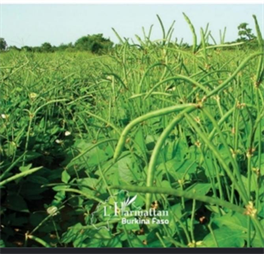
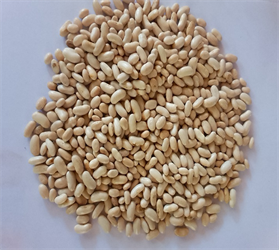
COWS1 (WHITE) COWBEA LEAF1
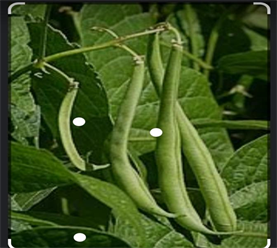
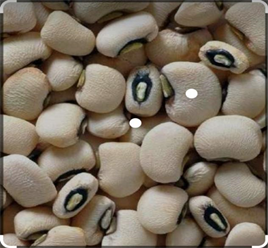
COWS5 (SPOTTED BLACK) COWBEA LEAF5

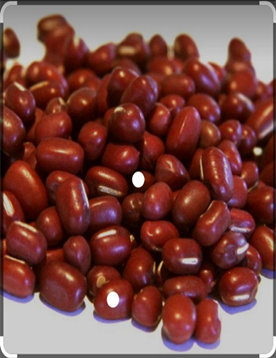
COWS4 (DARK RED) COWBEA LEAF4